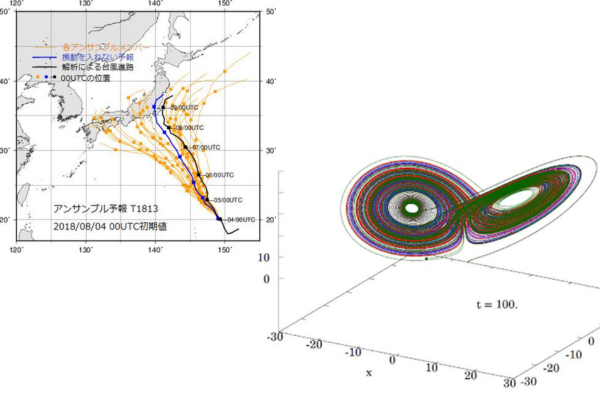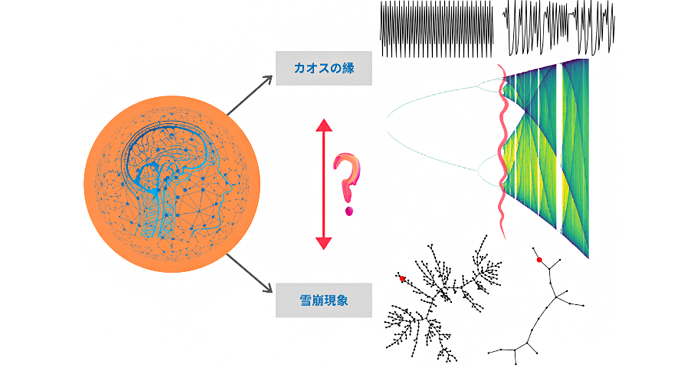When investigating the laws of nature, we come across the topic of chaotic and complex systems. These are phenomena that are not completely random, but have some rules, but are made up of complex intertwining factors, making them unpredictable in the long term. There are many things in nature that appear to follow certain rules, but they are never uniform, and it may be said that there are no two things that look the same but are the same.
butterfly effect
As exemplified by the question, “Does a butterfly flap its wings in Brazil cause a tornado in Texas?”, the butterfly effect is a phenomenon in which small factors have a large impact on the whole. Since the effects of small initial fluctuations are propagated in many stages, it is said that long-term phenomena in particular can result in unpredictably large changes.
In addition, the influence of small elements cannot be ignored as factors, and when small elements are taken into consideration, a huge number of other small elements also become involved, so it seems that simulating a chaotic system is also difficult. As the number of elements increases, the connections and relationships between elements also increase, so the complexity increases exponentially, so it seems that approximate methods are often used to simulate and predict nature. It is amazing that nature can maintain balance and diversity despite such complexity.
Chaos in Fluids (Turbulence)
Fluids, such as the flow of water or the movement of smoke, seem to maintain order to a certain extent, but when they exceed a certain flow rate or speed, the fluid suddenly becomes turbulent. Once turbulent, it becomes chaotic, and the vortexes create even smaller vortices, making it difficult to predict. Organisms such as swimming bacteria also create stable vortices, which suddenly turn into turbulence as their radius becomes larger. Chaos, which turns from orderly movement into disorder, can also occur in the movements of living organisms.

Climate and weather chaos
It seems that accurate prediction of climate and weather is difficult due to the complex connections between the atmosphere, ocean, cryosphere, geosphere, and biosphere, and the large number of physical phenomena involved. Turbulence seems to occur frequently in the air and underwater, and weather is a typical example of a chaotic phenomenon, despite being something so familiar. It is mysterious how the formation of clouds, for example, is kept in balance overall, as if the albedo (reflectance of sunlight) is controlled to be 0.3.

Ecological Chaos
Ecosystems also seem to be chaotic systems, with plants and animals, microorganisms, climate, and topography influencing each other, and even slight changes in factors (such as rising temperatures or the invasion of invasive species) having a major impact on the whole. Changes in population due to predator and prey species, such as rabbits and wolves, also seem to become chaotic when environmental conditions are changed, and even slight changes in the environment can have a major impact on the prosperity or extinction of species. Another characteristic of chaotic systems is that attempts to control ecosystems can lead to unexpected results.
Also, flocks of birds and schools of fish seem to move in beautiful, coordinated fashion as a whole, even though each individual follows simple rules. This is also called an emergent phenomenon, and order emerges even though there is no centralized chain of command. This too can suddenly turn to chaos, but it also seems as if cooperation and individuality coexist in a chaotic system.
Chaos in the body
Apparently, even heartbeats and brain waves, which at first glance appear rhythmic, behave in a chaotic way. It seems that when the neural network in the brain is on the edge of chaos, where it turns from a non-chaotic state to a chaotic state, the brain’s information processing efficiency increases. Living organisms are also full of fluids, and are complex systems, so they probably become chaotic. Perhaps most of the natural world is chaotic.

Chaos, Amazing
Even if we take a single flower, it may be said that it has the same shape overall, but if we look at the details, it may be said that it has a different shape. This may be one of the products of chaos. Nature is a chaotic domain between order and disorder, and it seems that important phenomena such as life, evolution, and climate are born in this domain. Chaos is important, as is fluctuation, which includes a certain degree of stability and slight change. But even so, how can the whole be balanced? It’s mysterious. Chaos is amazing. The Earth’s system is amazing.


